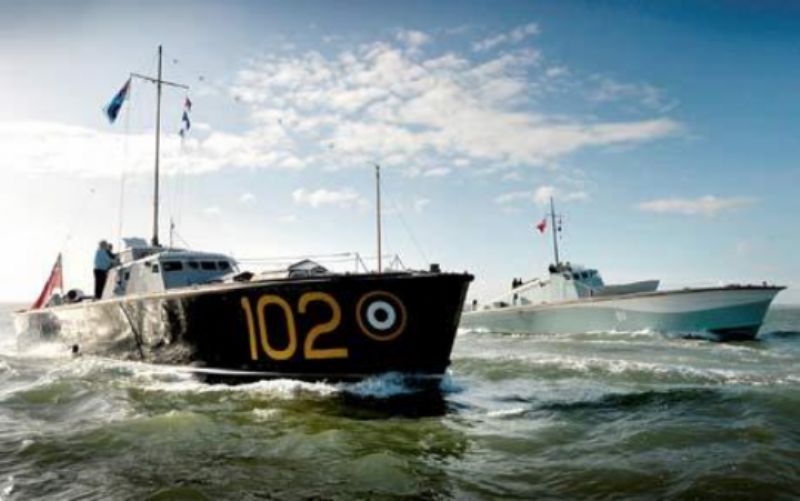 Some members of the GRI Board – I’m second from right, front row
Some members of the GRI Board – I’m second from right, front row
The Lancaster
One of the more dramatic mornings of my childhood in Northern Ireland was going some time in the mid-1950s to see the Shackleton that my father had crash-landed at RAF Ballykelly. My main memory is of the scorch marks underneath the fuselage and the propellers bent way back. What I didn’t know at the time, but know now after finishing Leo McKinstry’s book Lancaster: The Second World War’s Greatest Bomber today, is that the Shackleton, once described as “a thousand rivets flying in close formation”, was a direct descendant of the Lancaster.
Nor had I realised the sheer scale of the human and industrial effort that went into the Lancaster’s manufacture. Astoundingly, at the peak, it was estimated that 1.15 million people were involved in making the bombers. Each aircraft consisted of 55,000 different parts–leaving aside the nuts, bolts and rivets. To produce a single aircraft involved some 500,000 manufacturing operations, taking up to 70,000 man-hours – compared to 15,200 hours to build a Spitfire. “Nearly ten tons of light aluminium alloy were consumed in building each plane,” we are told, “the equivalent of 11 million saucepans.” That last figure, on page 317, strikes me as inconceivable, but there it is.
Given the at times almost insane courage of the men who flew these aircraft, it seems some sort of a crime that their efforts were recognised neither in Churchill’s final speech of the war nor in the sort of campaign medal that other arms of the services were awarded. No doubt much of that had to do with what is not recognised as overkill in the bombing of Dresden, but that was hardly the fault of the aircrew ordered out on such missions.
It took me a while to get through the book, and at times I persevered out of respect for the airmen, with no less than 44 percent of Bomber Command’s aircrew being killed during WWII. In the end, though, this is a magnificent tribute to a magnificent machine, and to to those who took it into battle. And one of the key lessons of this book, summed up in the challenges overcome by people like Lancaster designer Roy Chadwick and ‘bouncing bomb’ designer Barnes Wallis, was how critical perseverance was. Just as the early Spitfire was described as a bit of “dog’s dinner”, so the Lancaster evolved rapidly in the face of everything that nature, accident and its enemies threw at it.
Man on Fire Underwater
 Man on Fire, by Jason de Caires Taylor
Man on Fire, by Jason de Caires Taylor
I love the thinking behind Man on Fire, one of the first three submarine sculptures installed off the coast of Cancun, Mexico. Made out of marine cement and fibreglass by artist Jason de Caires Taylor, the figure weighs more than a tonne and is implanted with live corals, so that it blooms in fiery red and yellow–and, adding to the effect, the figure’s coating of corals will sting. Ouch, but makes me wish I was a diver.
Spitfires of the Sea
One of the more memorable afternoons of my young life was being rocketed out to sea from Plymouth in a sea rescue launch, powered by aircraft engines, when my father, Tim, was involved in air-sea rescue. I became more aware of the intense battle fought across the Channel by MTBs and E-boats thanks to the wartime involvement of Sir Peter Scott, who I first came across as a judge when I was going for a Winston Churchill Travelling Fellowship in 1981.
Two boats of the era – MGB 81 and High Speed Launch 102 – were in the news yesterday having been bought for the nation with £580,000 of taxpayers’ money. And a worthwhile investment, I think, aside from the sheer beauty of their lines. These craft played saved a total of some 10,000 airmen of all nationalities. If Flt Sgt Berry hadn’t blown Tim (unconscious in his parachute) back over land with his slipstream in 1940, he might just have been one of them.
And then there was the courage of the young men who crewed what some called the “Spitfires of the sea” – riding on top of thousands of gallons of high octane fuel, which tended to vaporise the boats when hit by incoming fire. Hats off to their memory.
Going Back
As I travelled in this morning on a packed-to-the-gills Tube train, for the first of a 2-day strategy away day session for Volans, my back gave out – so that rather than racing off for (what would have been) a surprise day with Innovation Arts, I ended up flat on the floor. Sam then taxied me off to Ale’s osteopath in North London, during whose kind ministrations my spine gave off a sound like a pistol shot – at least in my head. Something tells me that having sat in front of computers for some 30 years hasn’t served my poor back well. But am I likely to change? Well, I’m trying to sit up straight for the moment …


